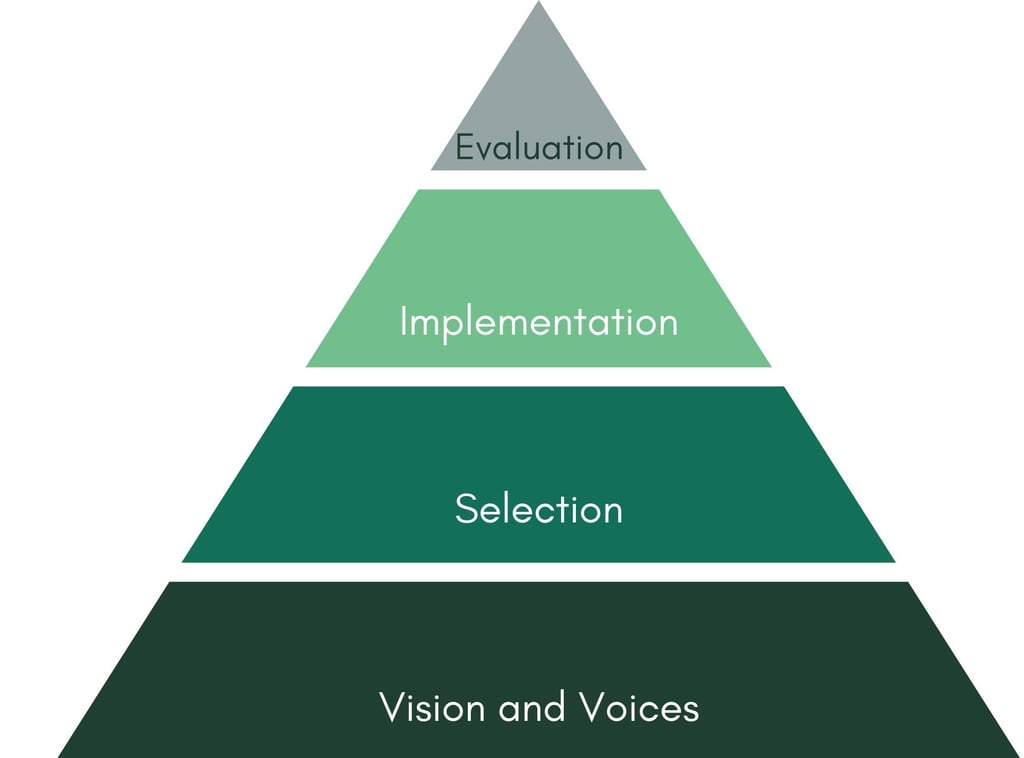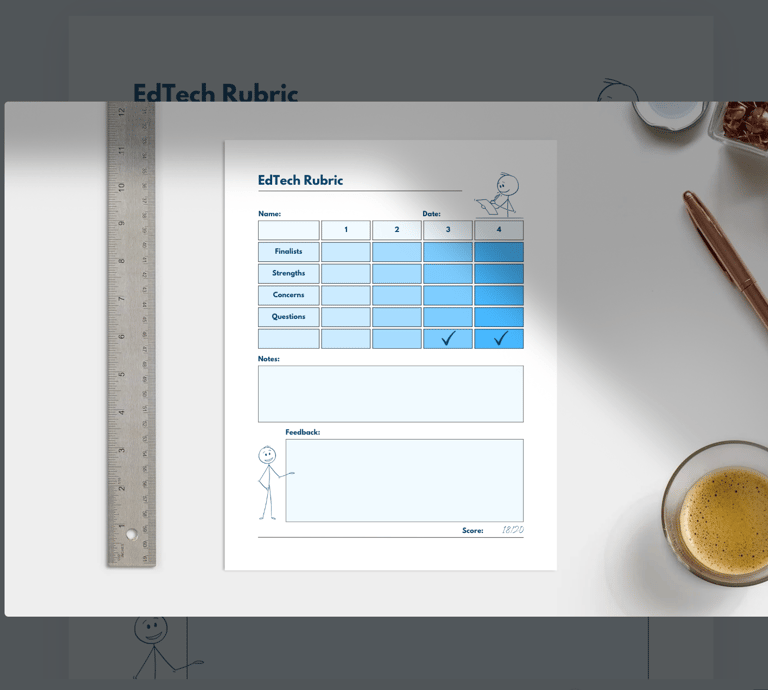Chapter 3: EdTech Implementation
From Selection to Implementation – Piloting & Scaling EdTech Successfully
TEACHINGLEADERSHIP
Olia Tomski
3/27/20253 min read


So, you’ve done the hard work—defining your school’s vision, engaging stakeholders, conducting a needs analysis, and carefully selecting an EdTech tool that fits. Now let's talk about implementation.
Even the best EdTech tool can fail if it’s not properly piloted, integrated, and supported. A successful rollout includes testing, refining, and scaling in a way that builds buy-in and maximizes impact.
This chapter walks you through how to pilot an EdTech tool, gather meaningful insights, and ensure a smooth, effective implementation.
Step 1: Before Piloting
Before fully committing, test-drive your EdTech tool with a pilot program. A well-structured pilot:
✅ Helps you assess effectiveness before large-scale adoption.
✅ Builds teacher and student buy-in before a full rollout.
✅ Identifies barriers and unexpected challenges early.
✅ Ensures the tool is meeting learning goals, not just checking a box.
Design Your Pilot Program
Before launching, set clear goals and answer these key questions:
📢 Communication: How will you introduce the pilot to educators, students, and families?
💡 Measurable Outcomes: What success metrics will you track? (Engagement, learning outcomes, usability, etc.)
⏳ Timeline & Scope: How long will the pilot last? Which classes, grade levels, or groups will participate?
👩🏫 Sample Size: How many users will test the tool to get a representative experience?


Example:
A middle school adopted a reading intervention tool with adaptive learning features. The expectation was that struggling students would use it three times a week for additional support. However, teachers quickly realized that students weren’t applying the strategies from the tool in their regular reading assignments. The tool was functioning in isolation, rather than reinforcing classroom learning.
An effective pilot program should test how well a tool integrates into everyday instruction, not just how often it’s used. Tools should complement teaching, not exist in a silo.
Step 2: Running Your Pilot & Gathering Data
With the plan in place, launch your pilot and track results.
🔹 Ease of Use: How intuitive is the tool for educators and students?
🔹 Implementation Barriers: Are there technical issues, usability problems, or gaps in training?
🔹 Learning Impact: Does the tool improve engagement, skill mastery, or instructional effectiveness?
🔹 Usage Patterns: Are educators and students using the tool as intended?
Not all users feel equally empowered to give feedback. To ensure equitable input, create a safe space for honest responses:
✅ Remind participants the goal is improvement, not perfection.
✅ Encourage candid feedback—not just what administrators want to hear.
✅ Ask follow-up questions to dig deeper into their experiences.
Step 3: Reflection—What Worked, What Didn’t?
Now, analyze the results. Gather your pilot team, educators, and stakeholders to review:
✅ What went well? How do you know?
✅ What didn’t work? What obstacles did users face?
✅ Were the outcomes better than the current system? Or just different?
✅ Did all stakeholders benefit equally? Or did some groups struggle more than others?
💡 Example: A district found that while most teachers loved a new assessment tool, ELL students struggled because it lacked multilingual support. This insight led them to refine their tool selection criteria moving forward.
Step 4: After Piloting
Once your pilot ends, it’s time to make an informed decision:
❌ Let It Go – If the tool doesn’t meet expectations, document the issues and explore better options.
🔄 Refine & Re-Test – If the tool shows promise but has gaps, tweak the approach and run another test cycle with adjustments.
🚀 Expand & Scale – If the tool demonstrates strong impact, roll it out across the school with a structured implementation plan.


Piloting Long-Term Success Tips
✅ Train & Support Educators – Offer live training, video guides, and peer collaboration.
✅ Communicate with Families – Make sure parents understand how tools benefit their children.
✅ Monitor & Adjust – Collect feedback post-implementation to ensure continued success.
✅ Even after full adoption, continuously track how well the tool is serving students, supporting teachers, and aligning with your school’s goals.

Key Takeaways
What’s Next?
✔ A well-designed pilot ensures your EdTech investment is worthwhile.
✔ Gathering real user feedback prevents expensive missteps.
✔ Equity matters—check who benefits and who faces barriers.
✔ Scaling requires ongoing training & support—not just a one-time rollout.
By approaching implementation strategically, schools can ensure that EdTech truly enhances learning, rather than becoming another underutilized tool.
